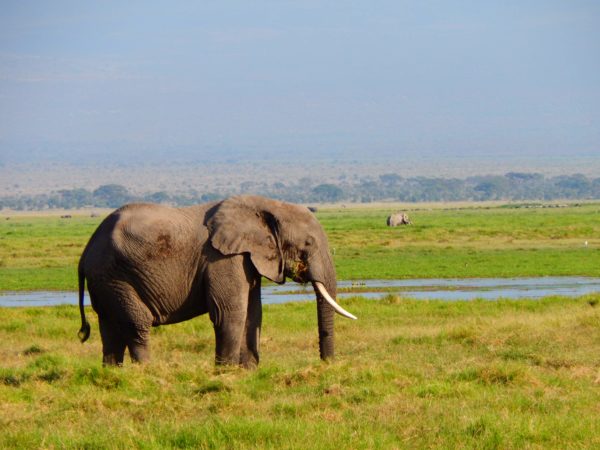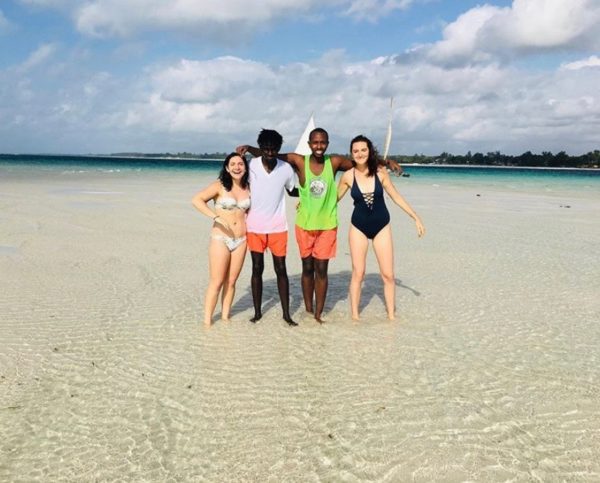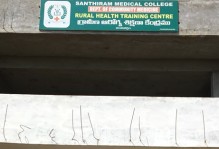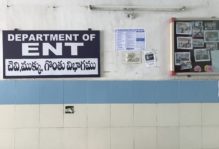Summer Fellows: From Turf to Surf
By Megan Hogan ’21
Summer Fellow 2019 Cohort
CLASP Organization, Nairobi, Kenya
It’s my second-to-last week in the office, and honestly? Everything feels a bit surreal. It’s absolutely terrifying how quickly time passes. One minute I’m at the airport in Newark hugging my mom and dad goodbye, and then I blink and it’s mid-July! Everything is just as my mom said it would be: the days are long but the weeks are short. Where did all the time go? I just can’t shake the fact that I’m actually leaving.
Many of my coworkers have returned from the field this week to prepare for a solar e-waste conference next week, and correspondingly my productivity has shot through the roof. I managed to complete all but one analysis section of my final report. I honestly couldn’t be more pleased with my work; my findings so far are even more significant than I had anticipated.
Both productive-use and household-use solar refrigerators have the potential to revolutionize poverty alleviation throughout East Africa, specifically within Uganda (the country where the majority of survey respondents lived). According to baseline and follow-up survey data I received from CLASP, off-grid Ugandan households waste approximately 47.4% of their total monthly and annual food expenses on spoiled food. Basically, this means if these households had access to refrigeration, they would be able to consume almost double the volume of food they already do. Or, if they do not wish to alter their consumption levels, they could save the 8.67 USD per day that they used to waste on spoiled food. Though 8 dollars may not seem like much, it’s transformative for off-grid households; 8 bucks a day can raise people out of both extreme and relative poverty!
Productive-use solar TVs, on the other hand, were far less obvious in their impact on extreme and relative poverty alleviation. On average, the additional income solar TVs generated for their owners was roughly 19.69 USD per week. While this average is sufficient to raise customers out of extreme poverty, the same cannot be said for relative poverty; customers would have to have generated a minimum of 21.70 USD per week in order to be raised out of relative poverty. Because I did not know what these solar TV customers’ annual incomes were, I was unable to calculate exactly how many people were raised above either poverty measure.
I ended my week with one final trip outside of Nairobi, this time not to a national park, but to the coast. Tagging along on my coworker’s vacation, I took the Madaraka express (known locally as “the SGR”) from Nairobi Terminus to Mombasa, and then a shuttle from Mombasa to Diani Beach for the weekend. The train ride was slightly excruciating given the number of screaming kids in my train car and the unforgiving hardness of the train seats, but I really couldn’t pass up the deal. For only 2000 shillings (about 20 dollars) I got a roundtrip ticket to Mombasa, Kenya’s coastal port city that’s a long 8 hour drive away from Nairobi. The beauty of the Kenyan countryside certainly helped to calm my nerves on my way down; the SGR passes directly in front of the famed Tsavo East and Tsavo West national parks, a place that’s all red soil, dramatic cliffs, and grazing animals. I spotted two elephant families on my way to Mombasa alone!
Diani is exactly what you think of when you picture coastal Africa: thick, dense jungle all the way up to the coastline, white sand beaches, harsh sun, guys selling freshly cut coconuts to people lounging on the shore, brightly colored tuk tuks bustling down dusty roads, women covered head-to-toe in a rainbow of kanga cloth, and weathered produce stands alongside every street. Our Airbnb looked like it was plucked straight out of the set of Tarzan: yellow clay walls with huge open air windows (perfect for viewing sunsets and catching a sea breeze), hand-carved African Blackwood tables and chairs, Victorian-style four-poster twin beds draped with mosquito nets, curtains hung over doorways, and an ancient cook stove that had to be lit with a match. The whole atmosphere of the town had a certain charm to it, even the run-down store fronts and restaurants that lined the main street. You could tell that life in Diani had not changed in decades.
But Diani does have a dark side. We found this out Friday night, when our Airbnb’s security guard refused to let us leave the property to walk to dinner, insisting that we take a cab or tuk tuk for safety reasons. This didn’t exactly come as a surprise though; it’s common practice in Nairobi to never walk outside at night. Ironically, the danger of walking at night actually led to one of my favorite memories of that weekend. After dinner, we couldn’t manage to hail two tuk tuks to return all seven of us back to our Airbnb at the same time, so instead of splitting up, we squeezed ourselves all into one tuk tuk and headed home!
Saturday was spent tanning by the pool, swimming in the ocean, and dancing at a local bar restaurant, while Sunday was spent snorkeling before catching the 3 pm train back to Nairobi. It was so nice to relax, meet new people, and catch some color (even though I brutally burnt my shoulders). Diani was my little reward to myself after a week of around-the-clock focus, and frankly, I couldn’t have imagined a better way to spend my last weekend in Kenya.






No comments.
Comments are currently closed. Comments are closed on all posts older than one year, and for those in our archive.